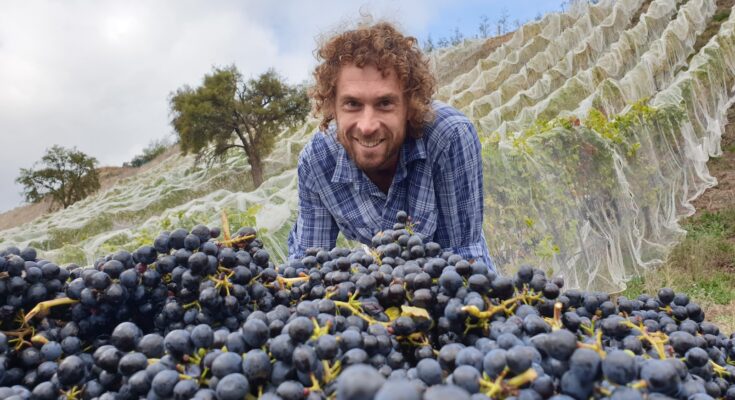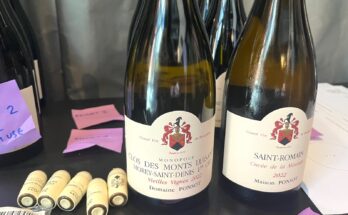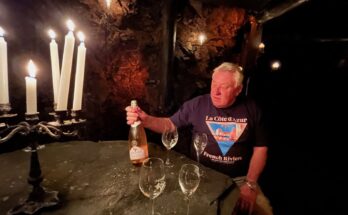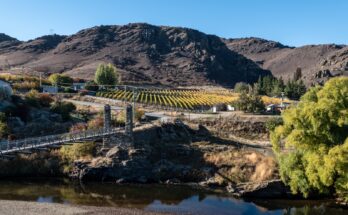I’m in North Canterbury to catch up with one of the labels that always seem to catch my eye – whether it is in a line up of varietals at a tasting, or just having a glass of wine with mates. Terrace Edge wines aren’t just the current Riedel Organic Winery of the Year – they just seem to have that extra couple of percent that make them stand out – character as well as delicious. It makes for a winning recipe. Their Syrah did well at our tasting, finishing in 4th place in a monumental line up, and their ‘Liquid Geography’ expression of Riesling is usually outstanding.
Today I’m talking with Pete Chapman, one the family that run this vineyard (and olive grove) on Georges Rd in the Waipara valley. Terrace Edge as you see it now all began with the Chapman family visiting a vineyard and olive grove on a summer holiday in Marlborough. They weren’t to realise that this visit would change the course of their lives. It only took two hours, and they were hooked – captured by the idea of working the landscape to produce something fantastic. Daring to ask the question ‘could they do that too?’ With a healthy dose of ignorance and naivety, the answer was a resounding ‘yes’.
Three months later, full of big dreams, the family bought a sunny terrace overlooking the Waipara River. The following weekend the family wagon was packed up and the first journey to the Waipara Valley, 45 minutes north of their home in Christchurch, began.
Today, we start with a walk around that property in its current form – beginning with my desire to look at the famously steep set of Syrah vines.
WineFolio: Oh my Lord! I knew it was going to be steep, but crikey – that’s got to be 45 degrees! I’m guessing that is hand harvested!? Who’s idea was it to plant that!
Pete Chapman: Yeah, well.. (laughs) Fortunately it was more than one of us, so we can’t point the finger! Sometimes photos don’t really do it justice. The Syrah loves it – it’s our slice of the northern Rhone, so to speak. Gravel, gets really hot. Gets about three or four degrees warmer than the rest of the property. We’ve got some Syrah here and some on the particularly gravelly part of the property, and both do really, really well.
We’re thinking of releasing something new in the next few months – doing a ‘Chosen Barrels’ type of wine. Both in Syrah and Pinot Noir. Because it has always been this, in with rest of the Syrah as one whole blend. We’ve done an ’18, ’19 and a ’20 and they’ve been sitting in the cellar. That will be exciting, to release something special.
WF: And I do love your ‘Liquid Geography’ wine – I like that it has vintage variation. I like to look at the Winemaker notes, just to see how the wine in my glass is explained by the vintage and making information.
PC: Yes, well not always on purpose! You get some years, and you’ve just got to let it be what it is, or else you’re going to be manipulating it so much.
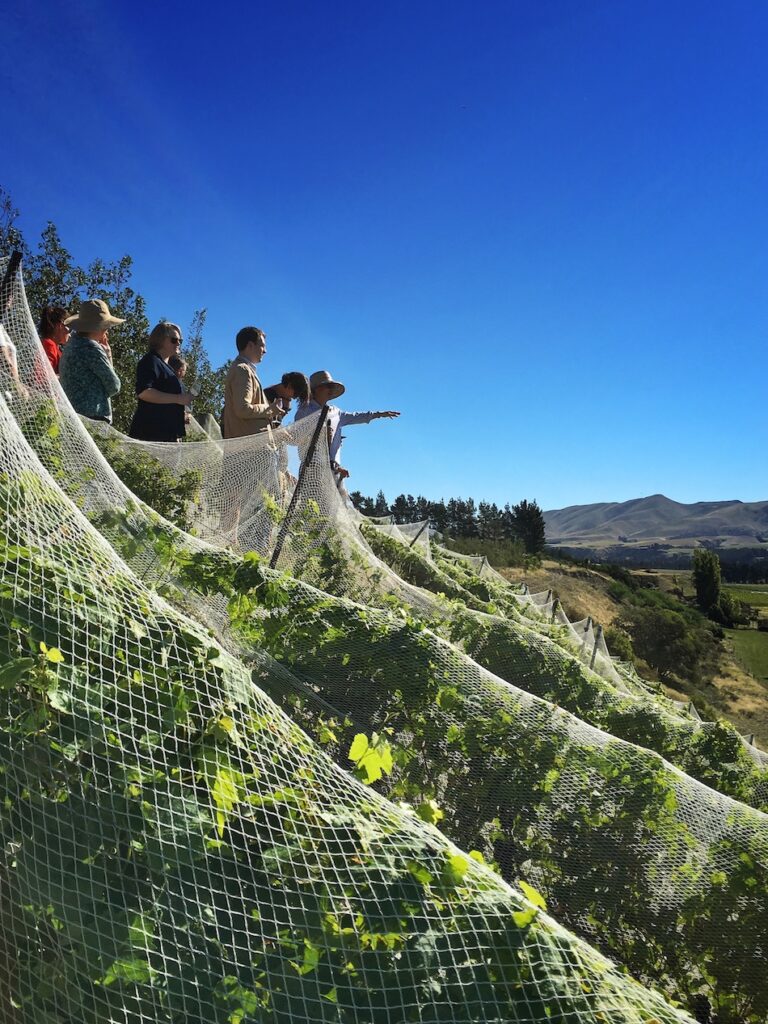
WF: So, what is your part in the process here?
PC: Mum and Dad bought the place and it started as a family hobby project back in 1999. We visited a Marlborough vineyard and olive grove, and then something about that really captured us. We naively thought that it would just be a weekend hobby. Then it got more and more out of control really. We knew of Waipara as we’d lived in Christchurch all our lives. We were on our way back from Marlborough and heard about this site – as it was for sale. Consequently looked at a number of others, but this is the one that we settled on.
I was still at school at that stage, so I went and studied at Lincoln Uni. doing a degree in Horticultural Science but did all the Winemaking and Viticulture papers as well. I never particularly saw myself as wanting to be a winemaker – more a grower. My mate who went through University with me, Adam Tate, he does the winemaking for us, up at Greystone. We’re certified organic, as they are. That’s how that works.
WF: This Cellar Door is pretty nice!
PC: My brother is a builder, so everyone just chipped in as well. The weekends are good, we’re busy. It has grown year on year for us. Do you want try a few wines?
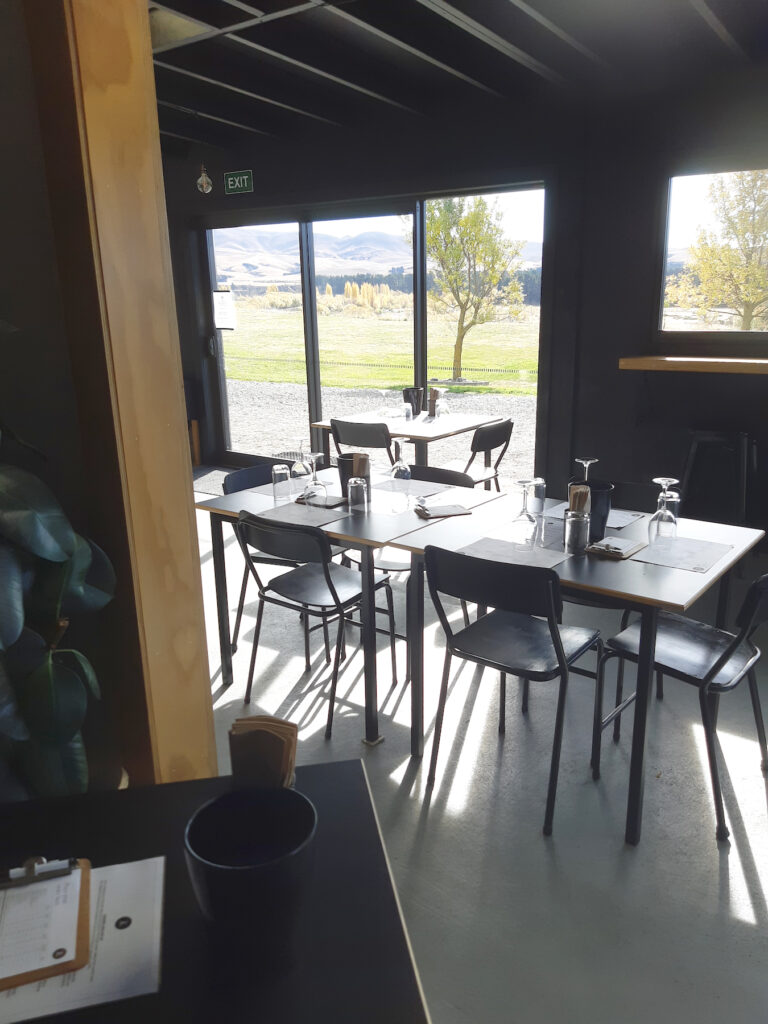
Our rosé is made from mostly Syrah grapes, with a little bit of Pinot Noir and Pinot Gris. We do have quite a bit of Pinot Noir planted but with the rosé we like to do something just a little bit different and get some spice and texture in.
WF: And the colour is right! That’s important. Get the colour right is half of the job with rosé? I’m a late starter with rosé. I must have had it, but I don’t recall really paying it any attention until I started writing about wine.
PC: There’s only really been an explosion in the last five years I reckon. It had been growing previous to that, but you go to a Wine Festival now and it is switched around from Sauvignon Blanc to Rosé.
It’s also switched around from being widely drunk, to being taken seriously in how it is made. I think it suits the New Zealand summer well.
We do two styles of Riesling. We only make the Classic in small quantities. It is a dry style. With the Liquid Geography, which is widely distributed in May, we try to capture more of that late harvest character if possible. A bit more residual sugar. The Classic is picked earlier and is meant to be more pristine and pure – just off-dry and really versatile wine. It’s nice to be able to show people what Riesling can do.
WF: It still has that hangover of it being what your Grandad used to drink, you know?
PC: Yes, unfortunately. I think it is a bit more widely accepted in New Zealand now, but it does seem to be hard to export round the world. There’s a bit of a stigma attached to it. I think that when you buy a Sauvignon Blanc you know it is going to have certain characters, and Riesling can be lots of things – and a bit of a mindbender for people?
WF: I like that it has a bit of spice to it, but what I really like is the mandarin character it has.
PC: I think Waipara Riesling has that mandarin skin character. It’s quite trademark Waipara (laughs) – and once you notice it you can’t help but see it stand out. We’ll try the Pinot Gris, just so we go in order of residual. Pinot Gris is about 50/50 barrel ferment and stainless steel. For us it gets that balance between wanting to build texture and complexity but also wanting that freshness and aromatics. We take it seriously in the vineyard and don’t crop it too high. It’s a bit like Riesling – it does divide people. We like to push it more in that Alsatian style and give it some richness.
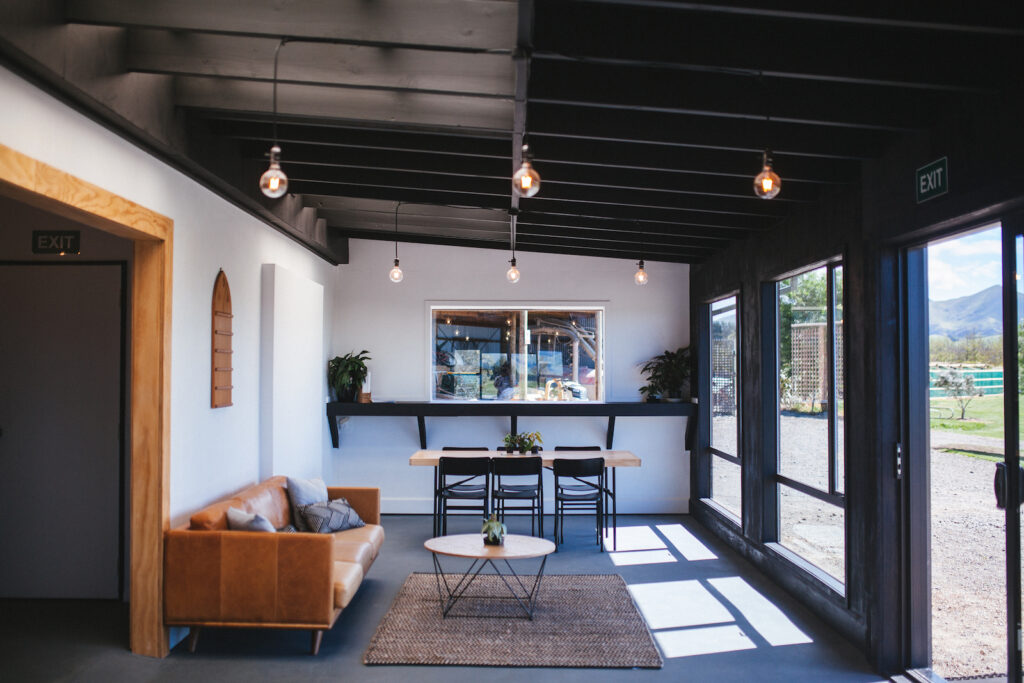
WF: I think you get real varietal purity in yours – it has all those identifiers in it, and I would imagine it would age well?
PC: It really does. We’ve been pulling out some aged ones from the library occasionally and most people wouldn’t think they want to buy, or try, an older Pinot Gris. But it is really really nice. Surprising. It’s one that people used to allow to really over-crop in the vineyard, but people have learnt that if you want to make something half decent, you have to look after it in the vineyard. And if you do, it will give you something pretty special.
We’ve also been pulling out some older Riesling and selling it. Basically because our Library is getting too big! It’s something fun for people to try. Back in ’09 we were just doing the one Riesling and it is in between the two styles we do now. It was a different winemaker back then, and it would have been native yeast and a different style.
WF: Good things happen to good aromatic wines after a while in the bottle! Do we know what happens to it – is there a science behind the magic of bottle age?
PC: I think you can put it in a Mass Spectrometer and see some of the compounds coming out, but how it all happens is perhaps not quite understood.
WF: Hmmm, that’s a lovely wine – around 30grams of residual I’d guess? That’s the kind of wine I’d like to have at the start of a meal. Something like pork belly or prosciutto, and rather than go for something quite acidic, I’d go for clean but sweet-ish like this 2020. Then go dry white and red, and finish with a dessert wine. That’s tremendous. How long have you been calling it “Liquid Geography”?
PC: 2011.
WF: I think the name of it is fantastic. How could you see a wine called that and not want to try it? It is like when people name their wine after a family member. I’m not saying that creates mystery or anything like that – but it had better be good, if you’ve named it after your Mum!!
So this is your latest Pinot Noir? It’s definitely got something savoury there. It’s like the fruit has a bloodiness to it. An iron earth character. I think I’d have to spend a bit of time with this – I have to say it’s got me puzzled. What do most people say about it?
PC: it seems to be going pretty well. It has been pretty well received so far by the wine writers so far. ’18 was a year where it is not as densely packed as some Pinots we’ve done. ’18 across most of New Zealand was bigger berries, bigger bunches. We have a pretty good extended ripening period in autumn, but we can get quite big crops of Pinot Noir. We’ll cut quite a bit off if we’ve got too much as we aim for concentration. We’ve noticed that since we converted to organic in 2011, that we get a more savoury earthiness coming into our Pinot and it is less fruit forward.
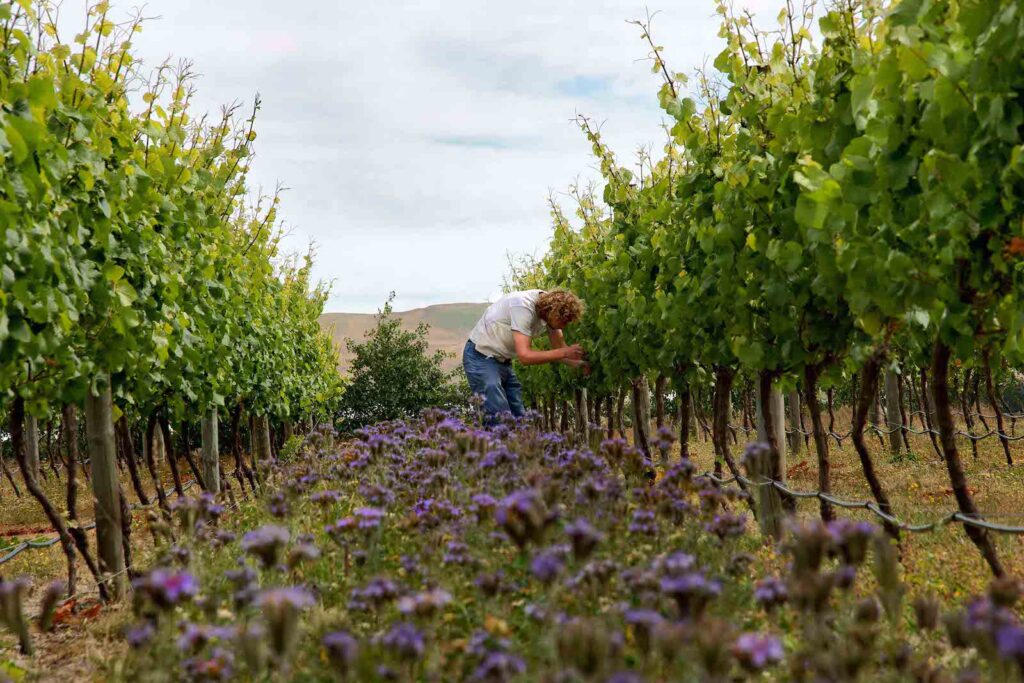
WF: I suspect that I would quite like that Pinot, in a bit. In three or four years. I’m finding it a bit edgy just now and needing a bit more harmony. I like the parts of it, but I think it needs to integrate more.
PC: We’re finding that with our wines – that they are densely packed and do need a bit of time. We have only just released it, so it will be interesting to see. This is our St. Laurent…
WF: Yum, that’s really nice isn’t it. And what do they think it is – Pinot Noir and what?
PC: I don’t think anyone really knows. In the vineyard itself it really doesn’t look that much like Pinot Noir. There’s definitely the leaf shape, but the bunches are quite a bit bigger. And what we find is quite amazing – it releases its colour quite quickly – and it is a thick skinned variety – so you end up with all this colour. You look at it and think “this is going to be a monster”. But she’s pretty silky smooth, really approachable and an interesting variety. Hans Herzog does one. Judge Rock down in Central Otago, and one at Spade Oak in Gisborne.
This is our Syrah, and we do love it.
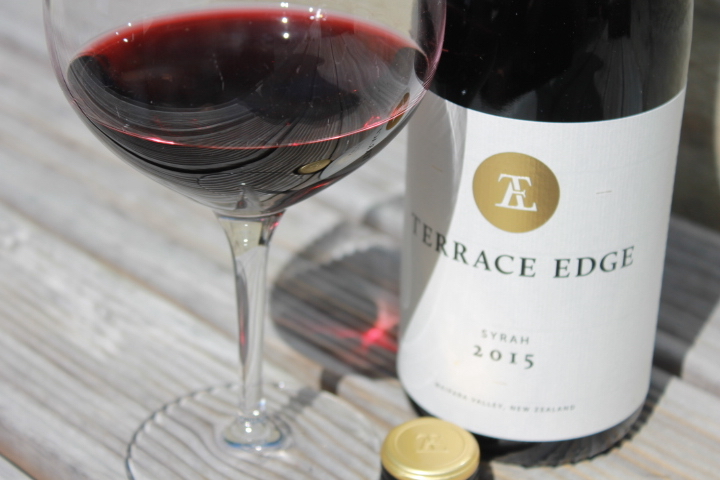
WF: Well, this did so well at our Top 10 tasting of Syrah, as you saw. There were some seriously big names in that tasting – an although it is only the Top 10 that gets published, we had as many wines on the day, as were in the Cuisine magazine tasting of Syrah that was in their last edition. A lot of very good wines didn’t make the Top 10. It’s not just my say, as there is a panel – often over two days – but what I personally look for when I’m judging is a wine that defines the variety and then has a bit of personality. Rule no.1 is always ‘is it delicious?’ I’ll often like wines that are at the edges, rather than something quite formulaic.
PC: I sometimes look at the results from a show and you can just tell that some of them are quite prescriptive and you almost know what is going to well each year. Wines can be made to fit that, and that takes a bit of the joy out of it all.

